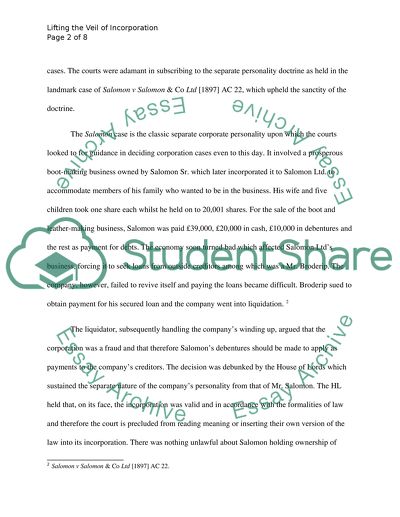Cite this document
(“Lifting the Veil of Incorporation Case Study Example | Topics and Well Written Essays - 1500 words”, n.d.)
Retrieved de https://studentshare.org/law/1520023-lifting-the-veil-of-incorporation
Retrieved de https://studentshare.org/law/1520023-lifting-the-veil-of-incorporation
(Lifting the Veil of Incorporation Case Study Example | Topics and Well Written Essays - 1500 Words)
https://studentshare.org/law/1520023-lifting-the-veil-of-incorporation.
https://studentshare.org/law/1520023-lifting-the-veil-of-incorporation.
“Lifting the Veil of Incorporation Case Study Example | Topics and Well Written Essays - 1500 Words”, n.d. https://studentshare.org/law/1520023-lifting-the-veil-of-incorporation.


